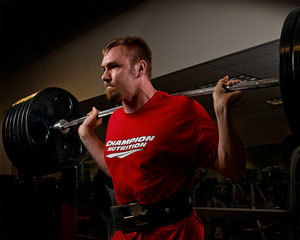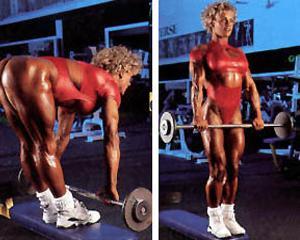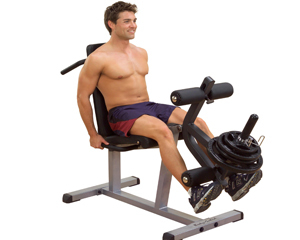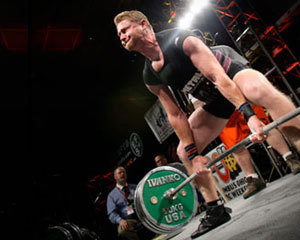DRAWN ROD TILT
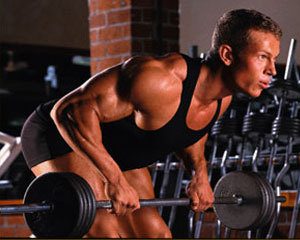 The barbell in the slope belongs to the basic exercises of the back. Regular implementation of this exercise perfectly develops the broadest, large round muscles and affects a number of others, which leads to a visual and actual thickening of the back.
The barbell in the slope belongs to the basic exercises of the back. Regular implementation of this exercise perfectly develops the broadest, large round muscles and affects a number of others, which leads to a visual and actual thickening of the back.
Exercise will serve as an excellent addition to any version of the deadlift for a full study of the back muscles.
The technique of performing the rod in the slope
Improper technique of this exercise will lead to a weak end result, and maybe even to serious injury. Therefore, it is important to master it:
1. Starting position: the body is tilted forward (up to an angle of 30 degrees with the floor), and the loin is slightly bent and tense. The legs are shoulder-width apart, slightly bent at the knees, and the head is looking strictly forward. The barbell is on the straight arms in front of the shins, the grip is “on top”, the distance between the palms is slightly wider than the shoulders, which will allow elbows to be removed above the level of the back. The elbows are located along the body and do not disperse, moving only in a vertical position during the exercise.
2. Inhale, hold your breath and begin to gently pull the bar to your belt, trying to do this exclusively with your back muscles and with minimal help from your arms. Once your elbows are level with your back, begin to pull your shoulders back, this will shift the load to the top of your back and allow you to lift the barbell even higher.
3. Pulling the neck to the belt, exhale and also gently lower the barbell down. After a short pause, you can perform the following repetition.
What you need to know:
Keep your head slightly raised. She and legs should be immobile during the exercise. Do not “round the back”: the loin should be bent and tense during the exercise, otherwise there is a high probability of injury.
Do not perform the exercise abruptly, jerking, it can also lead to serious injury.
Elbows at the top of the movement should be above the level of the back, this is a guarantee of good performance of the back muscles.
Do not chase after weights, increase the weight only when you have fully mastered the previous one, otherwise the execution technique will deteriorate, and this is fraught with consequences.
Options
Thrust rod in the slope of reverse grip. In this embodiment, the reverse grip contributes to raising the elbows strictly in one plane without breeding them, which often happens with the traditional grip from above. Therefore, this variant of the traction makes it much easier to adhere to the correct technique for doing the exercise.
Working muscles when tilted barbell
the broadest muscles
trapezius muscles
upper back muscles (rhomboid and large round)
biceps
back of the deltoid muscles
Alternative exercises
The same muscle mass, with some minor differences, is also very well affected:
Traction on the block
Thrust t-rod

